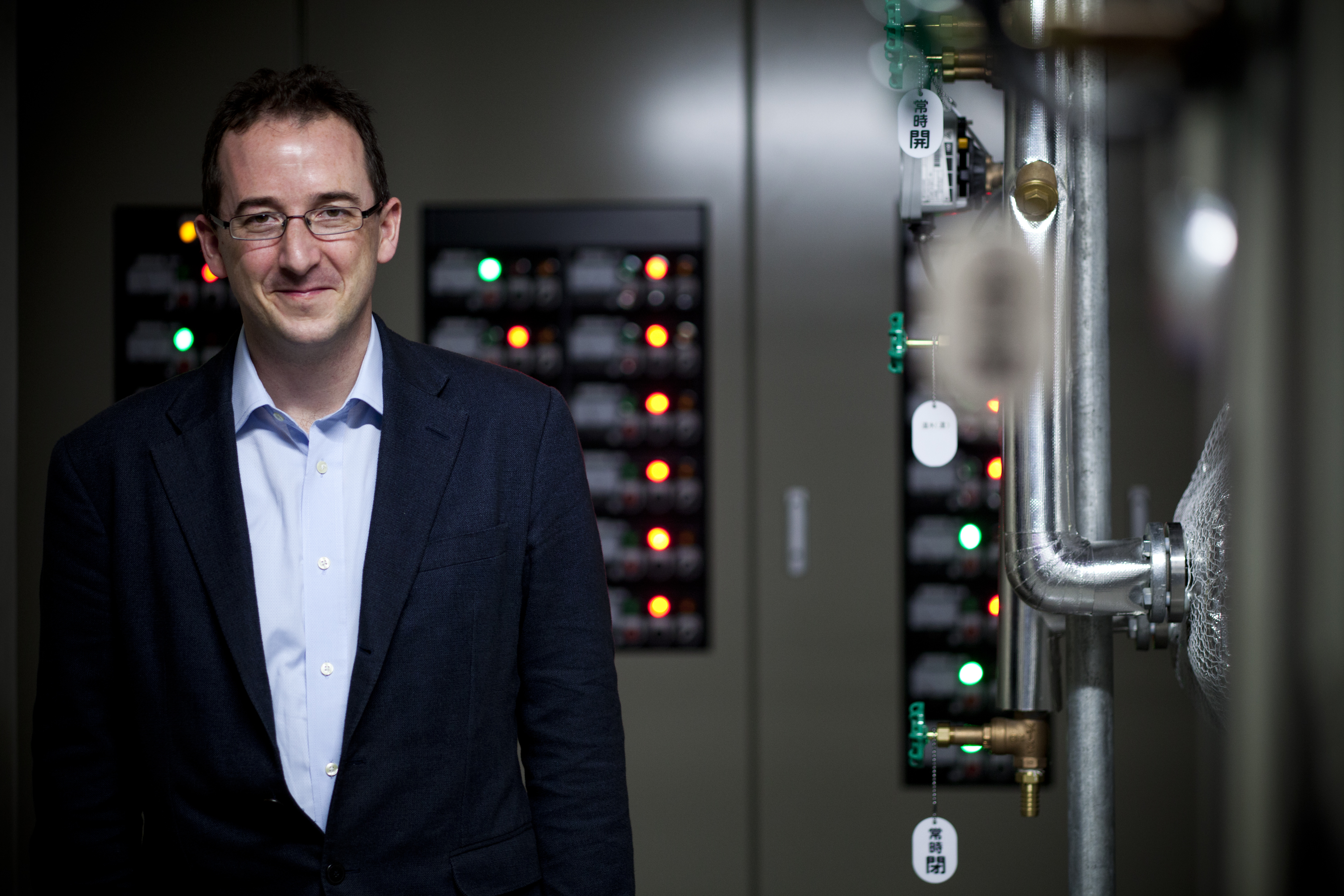BCCJ Accumen
Th Magazine of the British Chamber of Commerce in Japan runs an article about British scientists working in Japan - see here.


Dr Ben Seymour, Wellcome Centre for Integrative Neuroimaging, John Radcliffe Hospital, Headington, Oxford OX3 9DU
email: ben.seymour at ndcn.ox.ac.uk
Th Magazine of the British Chamber of Commerce in Japan runs an article about British scientists working in Japan - see here.

We have just been awarded a $11.3 million 5 year grant as part of the collaborative group led by Prof Mitsuo Kawato, to study brain machine interfaces. This research will be based at ATR, and will include new studies looking into the feasibility of brain machine interfaces for chronic pain.
We are currently looking for a post-doc or research assistant to work at ATR to study pain processing with fMRI. The post is available immediately, and involves using advanced neuroimaging methods to study basic neural processing of pain-related perception and motivation. The post is funded by MEXT (i.e. Japanese government research funding)
ATR is a well established multi-disciplinary research laboratory situated between the ancient cities of Nara and Kyoto. It is best known as a leading center for neuroscience and robotics, and has excellent facilities for fMRI (Verio and Trio 3T magnets) and MEG.
My lab is based jointly at CiNet in Osaka, and ATR. The appointment would favour someone who is able to work relatively independently, so experience in fMRI experimental and analysis is desired.
Please contact me if you are interested.
 Ben Seymour
Ben Seymour
Closing date is 10th Jan. Please apply via this link: http://www.cns.atr.jp/dcn/en/job-e/#pain

Wako Yoshida (ATR) will host a line of speakers including:
"Smart houses", Jamilah Rahim, ATR
"Mind-reading", Tomoyasu Horikawa, NAIST
"Neurofeedback", Saori Tanaka, Osaka University
"Cognitive robotics", Eduardo Cantello, CiNet
"Brain machine interfaces", Ben Seymour, Cambridge University
"Innovation strategies of the future: lessons from neuroscience", Kristen Cardinal, RIKEN Brain Science Institute
If you want to attend (free), please register here: https://www.surveymonkey.com/s/SciCafe18Nov
FINDING THE NEURAL CODE FOR PAIN (press)
Research into human pain should less focus on the subjective experience of pain, experts claimed at the Congress of the European Pain Federation EFIC. It was crucial to know how pain acts as a source of information, and understand how that information is processed by the brain’s neural computer. This could lead to a new generation of treatment approaches, involving, in particular, brain-machine interfaces.
Florence, 10 October 2013 – “Research into human pain has focused too much on the subjective experience of pain, and this hampered attempts to understand how the brain processes pain in health and disease”, Dr Ben Seymour (Cambridge, UK and Osaka, Japan) said today at the Congress of the European Pain Federation EFIC in Florence. “Instead, we should focus on what pain ‘does’, not what it ‘feels like’.” Together with Dr Masaki Maruyama, a neuroscientist from Kyoto, Japan, he presented a radically new view of pain.
They suggest that human pain should be conceived as the human brain’s solution to an engineering problem – the problem of identifying and minimizing future harm. “Pain is actually a biological ‘control system’ – a core harm detection and avoidance mechanism that controls and adapts our behaviour in response to harm. It is interesting to explore how the brain actually uses nociceptive information to shape future behaviour away from harm”, Dr Seymour said. Central to this view is treating the brain as a giant biological supercomputer, he said. “The key to understanding pain is to discover the underlying ‘source code’ – the basic computational commands and mathematical equations that are implemented in the brain.”
Some of these basic equations are uncovered by theoretical and human brain scanning work the experts presented at the EFIC Congress. For example they showed how the brain learns about future pain by scanning the brains of healthy volunteers whilst they perform decision-making tasks which involve mild electric shocks and heat pulses. Dr Seymour: “This has allowed us to propose a basic brain ‘circuit diagram’, describing how pain shapes our behaviour.”
“Our view is controversial as it deliberately ignores that fact that the brain is the source of the conscious feeling of pain, and ultimately it is the ‘feeling’ of pain that people in general and pain sufferers care about”, Dr Seymour said. “But we can’t understand the subjective feeling of pain without first understanding why we have evolved the pain system in the first place. This means that we have to know how pain acts as a source of information, and understand how that information is processed by the brain’s neural computer.”
The experts also claim this approach is well suited to an exciting new generation of treatment approaches likely to be available in the next few decades. “In particular, those that involve brain-machine interfaces, rather than drugs, are beginning to transform other areas of medicine such as rehabilitation, where the ability to read the ‘code’ for human movements directly from the brain can be used to control things like a wheelchair or a robotic limb”, according to Dr Seymour. “If we can understand the neural code for pain, it should in theory be possible to interfere or recode pain directly in the brain.”
Sources: EFIC Plenary Session, Seymour, How pain teaches us about harm: The neural basis of pain motivation systems; EFIC Summary Becker, Seymour et al: Brain Mechanism underlying the pain-reward interaction.